Introduction
Hey, have you ever tried to straighten your finger, but it just locks up, like it’s stuck in a bent position? Or maybe your thumb clicks painfully when you move it? That’s trigger finger, and let me tell you, it’s no fun. It’s like your finger decided to go on strike right when you need it most—whether you’re typing, grabbing a coffee, or just trying to wave hello. The good news? A trigger finger splint for middle finger or a trigger finger splint for thumb can be a game-changer. These little devices keep your finger straight, ease the pain, and help you get back to your daily groove. I’m here to walk you through everything you need to know, like a friend sharing their best tips. We’ll cover what trigger finger is, how splints work, how to pick the perfect one, and even other ways to find relief. Ready to give your fingers some love? Let’s dive in!
Understanding Trigger Finger

What Is Trigger Finger?
Picture this: as you are unscrewing the lid from a jar, one of your fingers unexpectedly stays bent for a moment and then suddenly jumps back to being straight as if released from being coiled. That might be a trigger finger among the people, though the doctors prefer to name it stenosing tenosynovitis. The language might seem very powerful, however, you should not be taken aback since it is just the indication that the tendons in your finger or thumb have stopped swelling or becoming irritated. These tendons are like strings that enable your fingers to move without any problems while passing through narrow canals which are known as sheaths. But when either the tendon swells or the sheath tightens, it’s kind of like yanking a rope through a narrow straw—it catches, which causes that click or snap feeling. According to the Mayo Clinic, it tends to hit women over 50 more often, but honestly, anyone who uses their hands a lot can run into it.
Symptoms and Causes
So, how do you know if you’ve got trigger finger? The signs are pretty noticeable. You might feel your finger or thumb catching or locking when you try to move it. There’s often pain or tenderness at the base of the finger, especially when you press on it. Mornings can be rough, with stiffness that makes your hand feel like it’s still half-asleep. Some folks even notice a small bump, or nodule, at the base of the affected finger. The ring finger and thumb are the usual culprits, but any finger can be affected.
➤ Ever wondered why your finger tip hurts when pressed? Find out more at Why Does My Finger Tip Hurt?.
What causes this annoyance? More often than not, it’s all those repetitive hand motions—think typing, gripping tools, or holding a steering wheel for way too long. I actually know someone who developed it just from knitting non-stop! Conditions like diabetes or rheumatoid arthritis can also raise your chances, as can hand injuries. And sometimes, there’s no rhyme or reason—your tendons just decide to throw a fit. According to the NHS, it tends to pop up more in women and folks in their 40s or 50s, so if that sounds like you, it’s something to watch for.
How Splints Can Help
Now, let’s dive into why a splint might just become your finger’s new BFF. A trigger finger splint for middle finger or thumb trigger finger splint works by keeping that stubborn finger straight, giving the irritated tendon a well-deserved break. Think of it like slipping your finger into a tiny, comfy cast—no heavy lifting required. This helps calm down the inflammation inside the tendon sheath, easing the pain and keeping that frustrating locking at bay. Splints are a real MVP at night, too, since fingers often feel their stiffest first thing in the morning. Research, like one study from PubMed, shows splinting helps about 66% of folks—making it a smart move before jumping into more invasive options. Best part? You can do it all from home—no needles, no scalpels, just you and your splint.
Pros and Cons of Using a Trigger Finger Splint
Benefits of Splinting
Why choose a splint?
First off, it’s non-invasive—which means no worrying about needles or going under the knife. Just slide it on, and let it quietly do its thing. Splints can ease pain and stiffness in a big way, especially if you wear them overnight. They’re also super handy—you can grab one, use it at home, and go about your business. Plenty of folks find that a trigger finger splint for thumb or middle finger helps restore movement over time, making everyday stuff like writing or gardening a whole lot easier.
Studies, like those from 3PointProducts, suggest splints can even help some avoid surgery altogether. How’s that for a win?Potential Drawbacks
But let’s face it, splints are not magical. They have a kind of heavy feeling initially and can be as if you break in tough, the soles of new shoes. In case the size is not appropriate for your finger, it could be the case that the splint will go up and down all the time or grip it, in which case the irritation will come sooner. By using a splint, you will be also able to perform less finger movement, thus, you’ll have to struggle with cooking or typing the more. In certain cases, for instance, if the person has been dealing with the trigger finger for a while or if the condition has worsened, a splint may have little or no effect at all. On the other hand, taking a splint off too late might even make your hand weaker if you’re not careful, and therefore, it is only rational to comply with your doctor’s instructions. To sum up: splints are good to wear, but they are not the only solution.
Key Factors in Choosing a Trigger Finger Splint

Material and Design
When it comes time to pick out a splint, the material really makes a difference. Most are made of plastic or aluminum—sturdy enough to keep your finger in place. Some come with padded fabric or neoprene covers to soften things up against your skin. You’ll want something breathable too, so you’re not stuck with sweaty, itchy hands—because let’s be real, nobody’s signing up for that. The Dr. Arthritis guide recommends sticking with medical-grade materials for both comfort and long-term wear. A well-designed splint should feel supportive without being bulky.
Size and Adjustability
Fit is everything. If a splint’s too loose, it won’t help much—and if it’s too tight, it might actually make things worse. That’s why adjustable ones with Velcro straps are a game-changer—you can fine-tune the fit based on swelling or finger size. This really matters with a trigger finger splint for middle finger, which needs to fit a longer finger, or a trigger finger splint for thumb, since thumbs have a totally different shape. Always check the product details to make sure it fits your measurements, and don’t hesitate to grab a tape measure if you need to.
Comfort and Breathability
Comfort isn’t optional—especially if you’re going to be wearing that splint for hours at a time. Ones with padding or breathable fabric like neoprene or nylon can help keep your skin happy and irritation-free. I mean, trying to sleep in a stiff, scratchy splint? No thanks. Some are built for daytime wear, while others are a bit bulkier to support your hand overnight. Go with whatever fits into your routine and feels right against your skin.
Price and Value
Trigger finger splints typically cost between $8 and $15, depending on the brand and features. While it’s tempting to go for the cheapest option, a slightly pricier splint with better materials or adjustability might save you hassle in the long run. Think of it like buying a good pair of sneakers—you want quality that lasts. Compare reviews to ensure you’re getting good value for your money.
Specific Needs for Middle Finger vs. Thumb
Not all splints are created equal, especially when it comes to the middle finger versus the thumb. A trigger finger splint for middle finger needs to be long enough to support the finger’s length, while a thumb trigger finger splint should be contoured to fit the thumb’s unique joint. Some splints are universal, but others are finger-specific, so double-check before buying. For example, thumb splints often have a curved design to allow slight movement while still providing support.
The 9 Best Trigger Finger Splints
Now for the exciting part—let’s check out the top 9 trigger finger splints that stand out for their effectiveness, comfort, and value. Whether you’re dealing with a trigger finger splint for middle finger or a trigger finger splint for thumb, there’s something here for you. I’ve scoured reviews and research to bring you the best options, so let’s dive in!
| Splint Name | Price | Best For | Pros | Cons | Suitable Fingers |
|---|---|---|---|---|---|
| Vive Trigger Finger Splint | about $12 to $17 | General Use | Comfortable, secure, 60-day guarantee | May not fit all sizes | Any finger |
| Dr. Frederick’s Splint | about $14 | Multiple Fingers | Doctor-developed, durable | Can be bulky | Index, Middle, Ring, Pinky |
| Mueller Trigger Splint | about $15 to $20 | Daytime Use | Allows movement, comfortable | Less support for severe cases | Any finger |
| BraceAbility Splint | about $10 to $92 | Versatility | Secure, breathable | May be loose | Any finger |
| 3Point Oval-8 Splint | about $13 to $44 | Nighttime Use | Low-profile, effective | Size fitting needed | PIP/DIP joints, Thumb |
| Dr. Arthritis Splint | about $13 to $32 | Sports Injuries | Durable, soft | Not ideal for night | Any finger |
| NOGIS Finger Splints | about $12 | Budget Option | Affordable, colorful | Less support | Any finger |
| WOVTE Trigger Splint | about $7 | Adjustable Fit | Customizable, secure | Complex to adjust | Thumb, Fingers |
| Trigger Finger Release Splint | about $15 to more | Specialized Use | Tailored, effective | Higher cost | Any finger |
1. Vive Trigger Finger Splint

Features
- Lightweight, breathable neoprene
- Aluminum brace for support
- Universal size with adjustable fasteners
Pros
- Super comfortable for long wear
- Stays put with a secure fit
- Comes with a 60-day money-back guarantee
Cons
- Might not fit perfectly for very small or large fingers
Best For
Anyone looking for a versatile, comfy splint that works for most fingers, including the middle finger or thumb.
2. Dr. Frederick’s Original Trigger Finger Splint
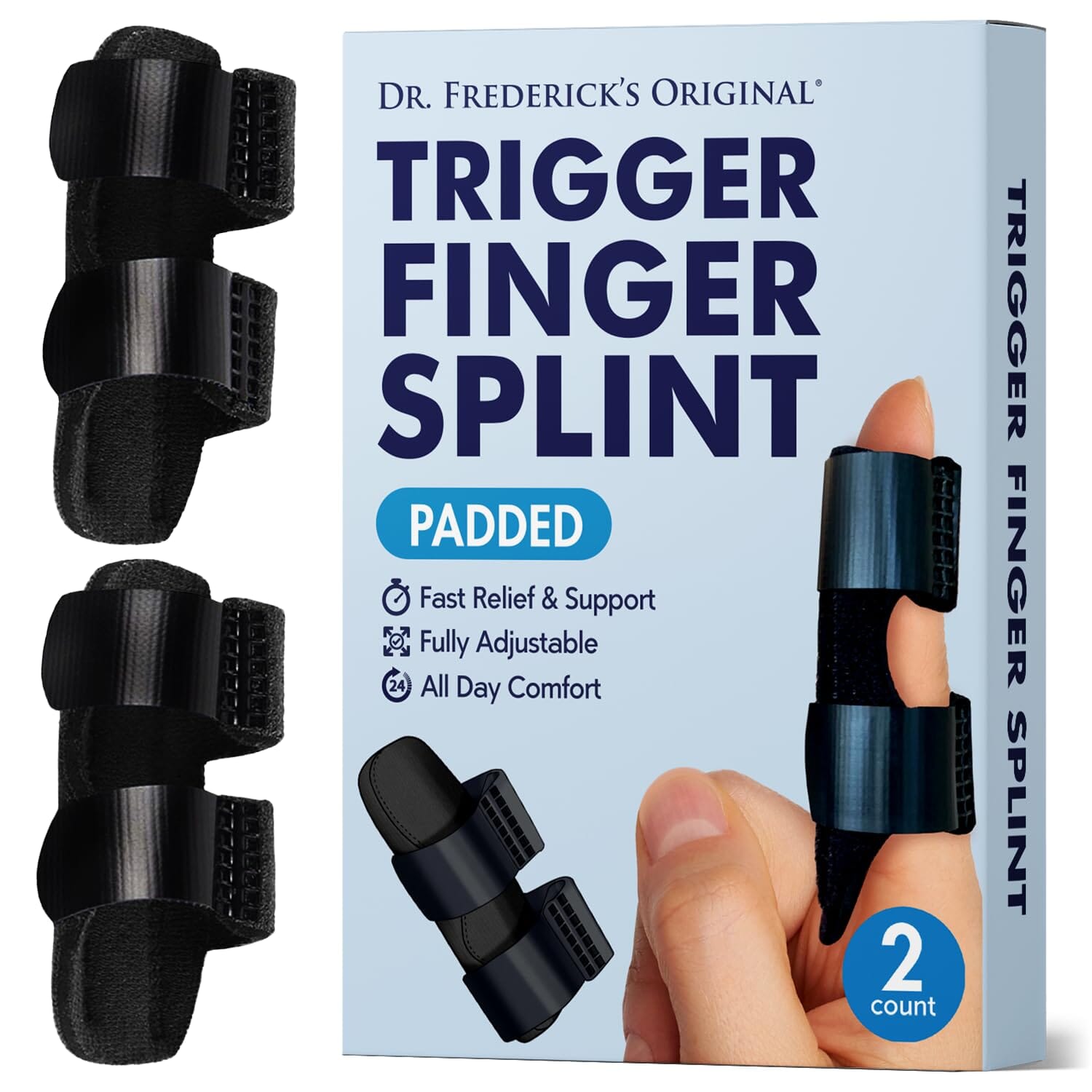
Features
- Adjustable design
- Fits index, middle, ring, and pinky fingers
- Built for durability
Pros
- Doctor-developed for reliability
- Great for day or night use
- Tough enough for daily wear
Cons
- Can feel a bit bulky for some
Best For
People who need a trigger finger splint for middle finger or other fingers and want something sturdy.
3. Mueller Trigger Finger Splint

Features
- Breathable neoprene
- Rigid aluminum stay
- Adjustable straps
Pros
- Allows some movement for daytime use
- Comfortable and breathable
Cons
- May not provide enough support for severe cases
Best For
Those who need a splint they can wear while staying active.
4. BraceAbility Trigger Finger Splint
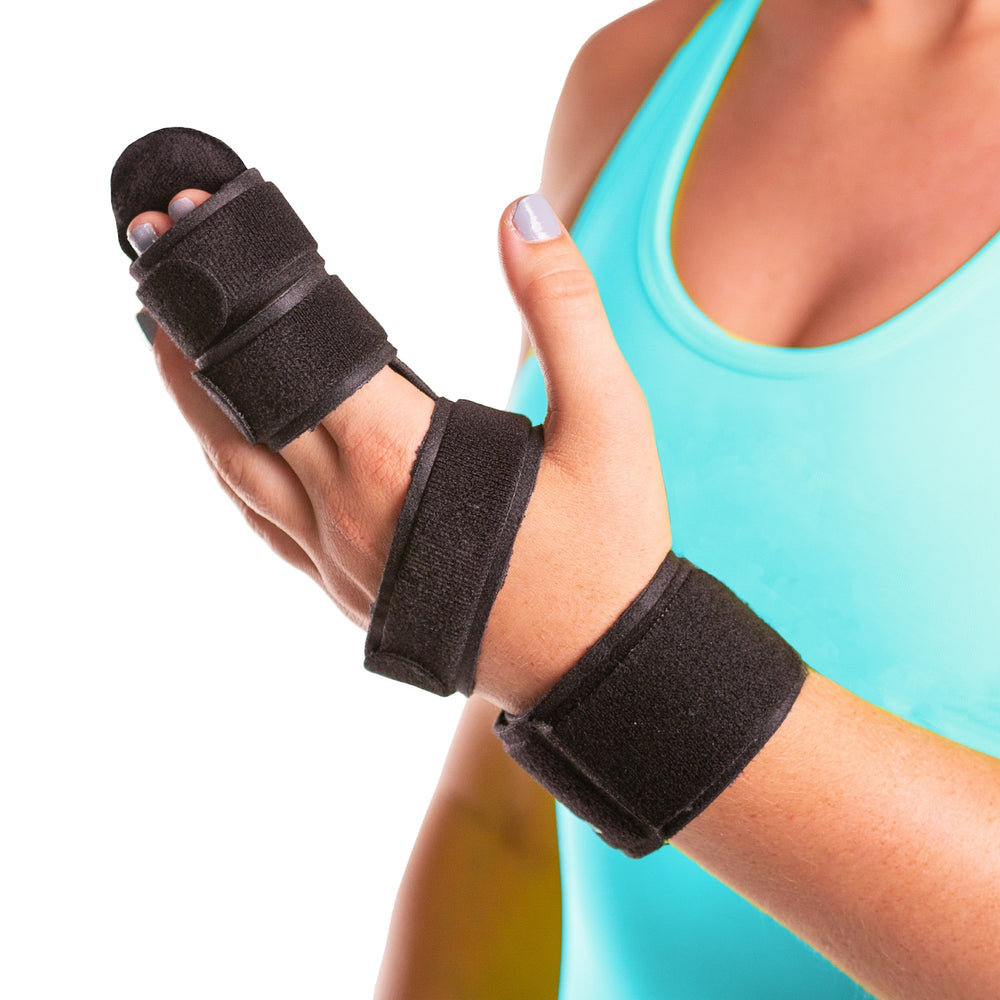
Features
- Universal fit
- Breathable fabric
- Rigid aluminum splint
Pros
- Comfortable and secure
- Works on any finger
Cons
- Might be too loose for some users
Best For
Versatility across different fingers, including thumb.
5. 3Point Products Oval-8 Finger Splint
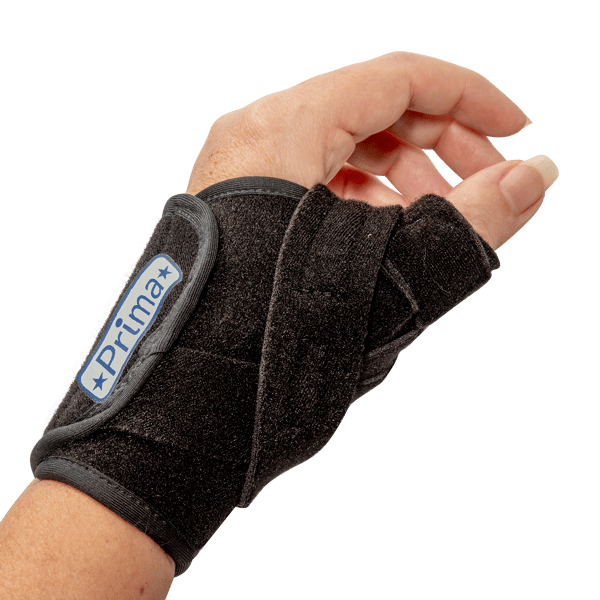
Features
- Designed for PIP or DIP joints
- Low-profile design
- Available in different sizes
Pros
- Super effective for trigger finger
- Comfy for nighttime use
Cons
- You might need to try different sizes
Best For
Discreet wear, especially as a thumb trigger finger splint.
6. Dr. Arthritis Finger Splint
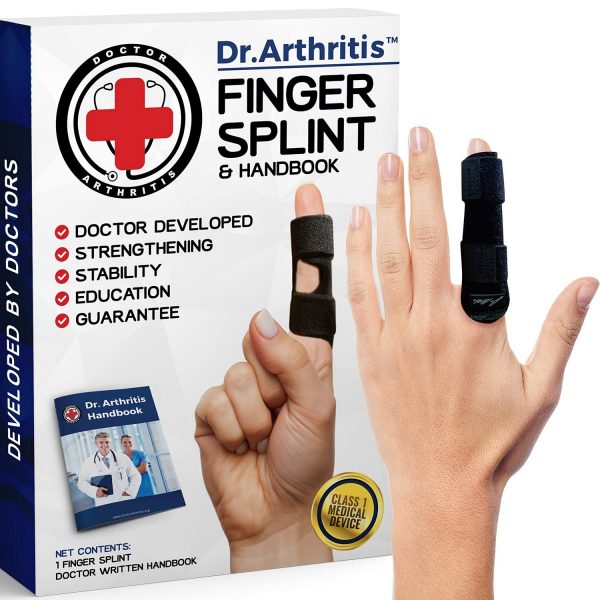
Features
- Copper-infused nylon
- Adjustable with compression strap
Pros
- Durable and soft for all-day wear
Cons
- Not the best for nighttime use
Best For
Sports injuries or all-day support.
7. NOGIS Finger Splints
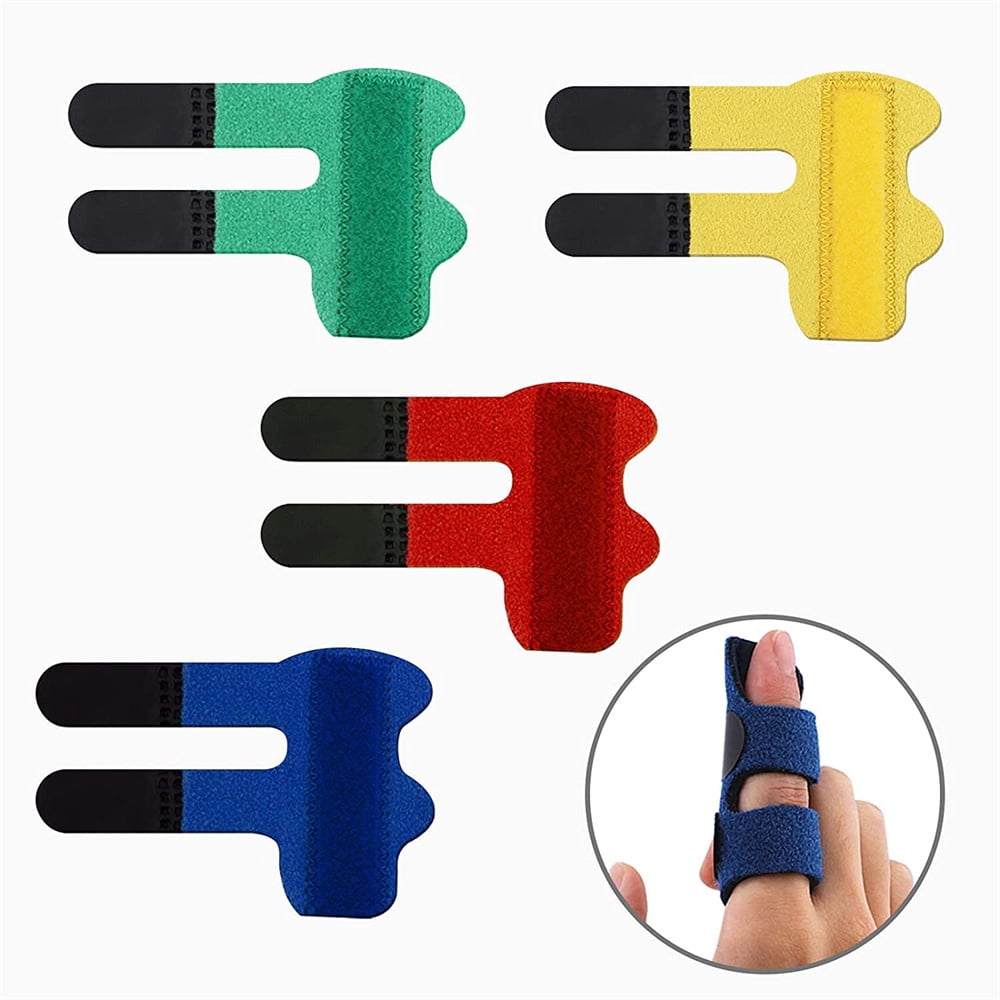
Features
- Set of 5 in different colors
- Made for arthritis and trigger finger
Pros
- Super affordable
- Fun color options
Cons
- Less support for severe cases
Best For
Budget-conscious folks or those needing multiple splints.
8. WOVTE Trigger Finger Splint
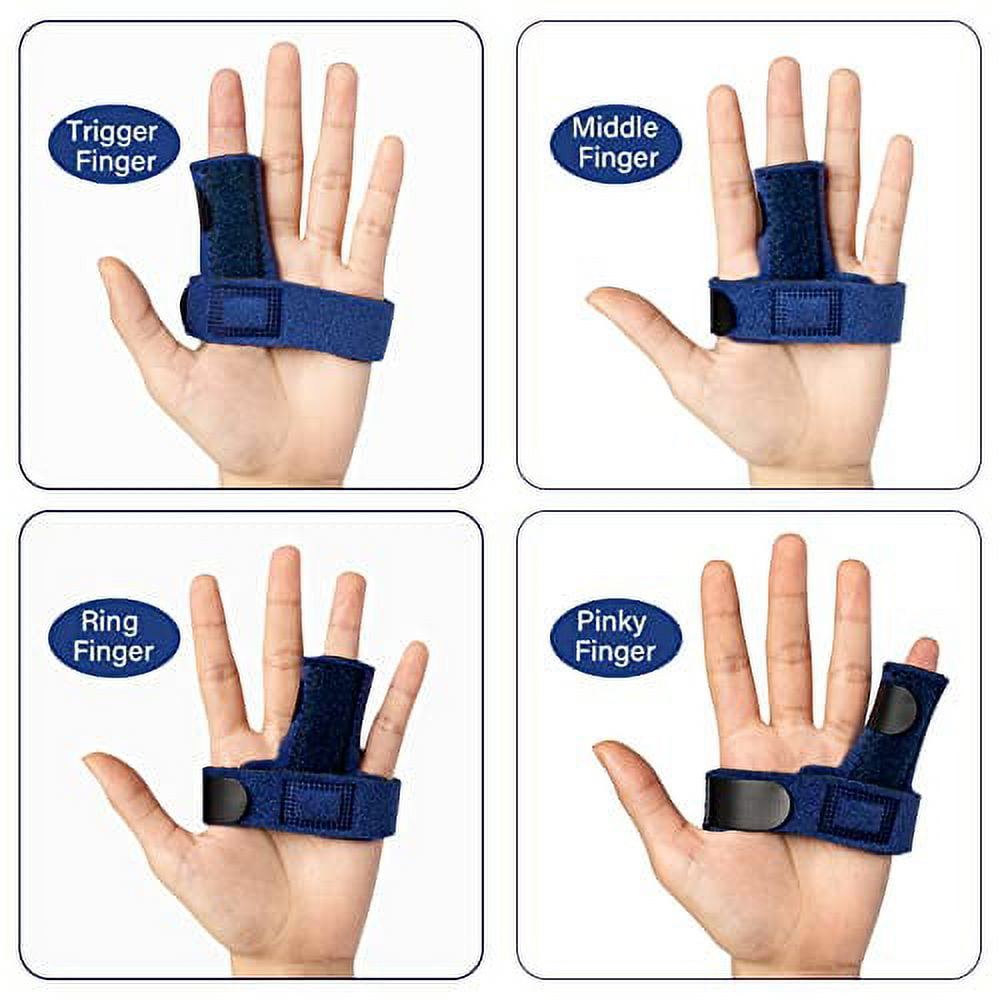
Features
- Adjustable with belt-in aluminum splint
- Works for thumb and fingers
Pros
- Highly customizable fit
- Secure and stable
Cons
- Can be tricky to adjust
Best For
Users who want a tailored fit for their thumb or fingers.
9. Trigger Finger Splint by Trigger Finger Release
Features
- Specifically designed for trigger finger
- Potentially customized
Pros
- Tailored for the condition
- Possibly more effective
Cons
- Might cost more
Best For
Those seeking a specialized solution, possibly with doctor guidance.
How to Properly Use Your Trigger Finger Splint
Step-by-Step Instructions
Using a splint is pretty straightforward, but doing it right makes all the difference. Start by ensuring the splint is clean—nobody wants germs on their hand! Place it on your finger, aligning it so it keeps the finger straight or slightly bent, as your doctor advises. If it has straps, secure them snugly but not so tight that your finger turns purple. You should feel supported, not squeezed. Check for comfort—no pinching or rubbing—and adjust if needed. The Hand Society suggests checking the fit regularly to avoid pressure sores.
Recommended Wear Time
How long should you wear it? That depends on your symptoms, but many doctors recommend wearing a splint at night to tackle morning stiffness. You might need it for a few weeks or until your finger feels better. Some folks wear it during the day for extra support, but avoid overdoing it, as long-term use can weaken your hand. Always follow your doctor’s guidance—they’ll know what’s best for you.
Tips for Best Results
Want to maximize your splint’s benefits? Here are a few smart tips: Pair your splinting with proper rest to really give that tendon a breather. Try some gentle stretches—just make sure they’re therapist-approved—to help keep things flexible. Keep your splint clean with a quick wipe from a damp cloth or whatever the care label suggests. And here’s a little pro tip: prop your hand up on a pillow at night to cut down swelling. It’s like treating your finger to a tiny staycation!
Alternative Treatments for Trigger Finger

Medications and Injections
If the splint is not good enough, other solutions are available. NSAIDs not requiring a prescription, such as ibuprofen, are powerful pain relievers and help in swelling reduction. They are the best choice for light cases. Corticosteroid injections are also commonly used which provide more relief. These shots reduce swelling in the tendon sheath, with studies showing up to 84% success rates (PubMed). They’re quick but may need repeating, and they don’t work for everyone, especially if you have diabetes.
Physical Therapy
Physical therapy can work wonders, too. A therapist might guide you through gentle stretches or massage to improve mobility and reduce stiffness. Techniques like ultrasound therapy can also help with inflammation. The HealthPartners blog highlights exercises that keep your hand strong without overdoing it. It’s like a workout for your fingers, but way gentler!
➤ Curious about physical therapy for pain relief? Check out Can Physical Therapy Ease Pain?.
Surgical Options
For severe cases, surgery might be the answer. It’s a simple procedure where a surgeon cuts the tight tendon sheath to free up the tendon. It’s highly effective, often with near-100% success, but there’s a recovery period of a few weeks, especially if you do manual work. The NHS notes it’s usually a last resort, so try other options first. Surgery sounds scary, but it’s often a quick fix for stubborn cases.
Conclusion
Dealing with trigger finger can feel like a constant battle, but you don’t have to go it alone. A trigger finger splint for middle finger or thumb trigger finger splint can be a simple, effective way to ease pain and get your hand moving again. By choosing a splint that’s comfortable, adjustable, and suited to your finger, you’re setting yourself up for success. Don’t forget to use it correctly—nighttime wear is key for many—and pair it with rest or exercises as needed. If splints aren’t enough, treatments like injections, therapy, or surgery can step in. The most important thing? Talk to your doctor to find what works for you. I hope this guide has given you the confidence to tackle trigger finger head-on. Have you tried a splint yet, or are you exploring other options? Share your thoughts below—I’d love to hear how you’re managing! Keep those hands happy and healthy!

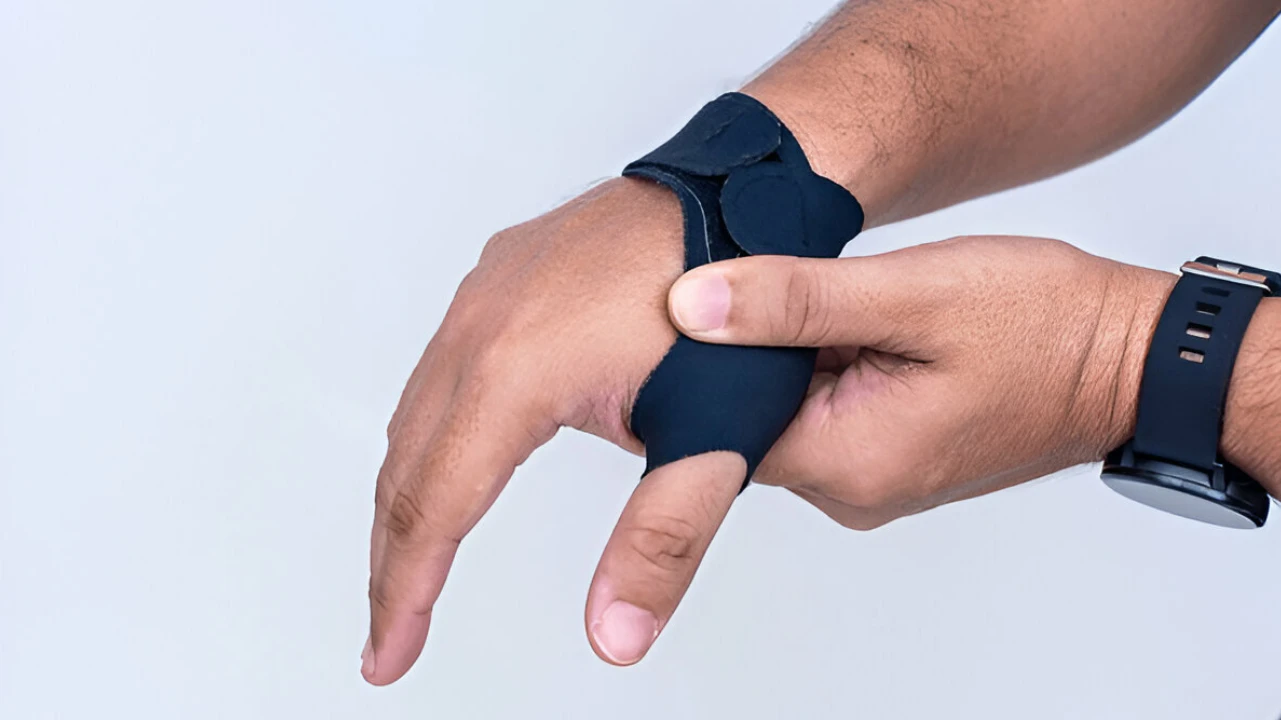
















Leave a Reply
You must be logged in to post a comment.